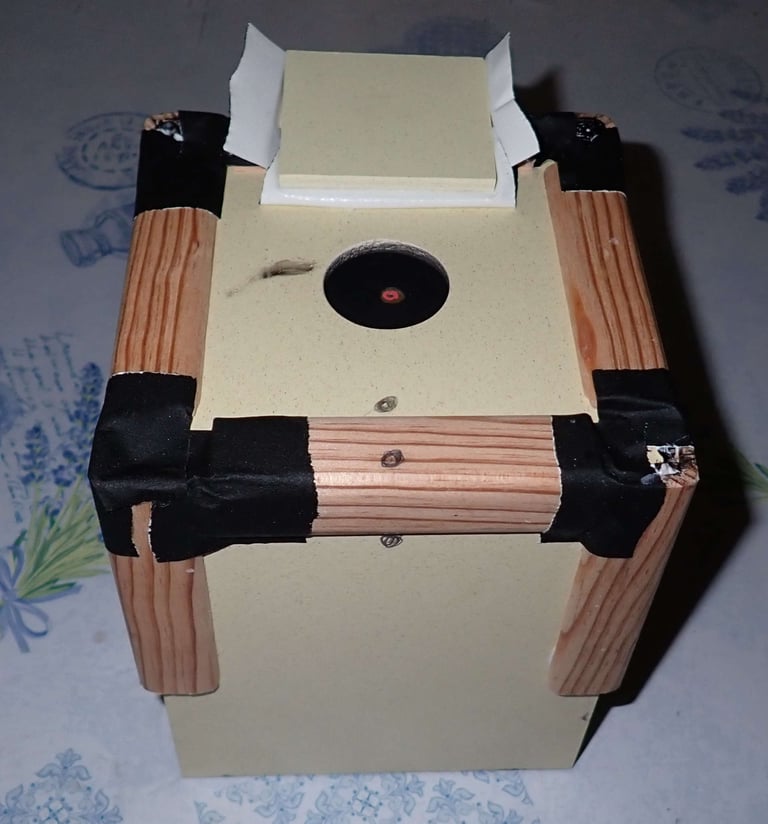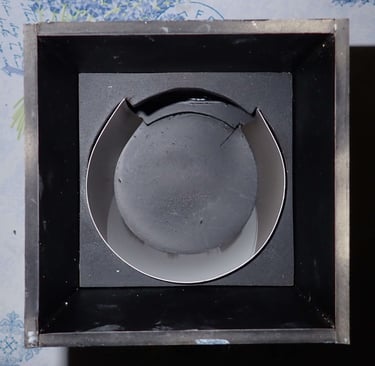Photos impossible with a normal camera
Bad weather even on Pinhole day? While it rains or the clouds cover everything in a pale, gray light, without shadow, let's express a little neuron juice. If the weather becomes nicer again I will finally be able to publish a new article every week, otherwise it will be paper, rules and thoughts around a new model. And this time it's even two models...
1: Almost 140° panoramic in 12x30.5 cm

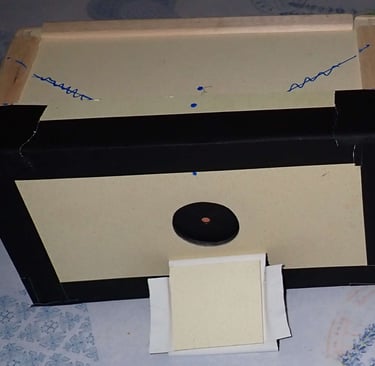
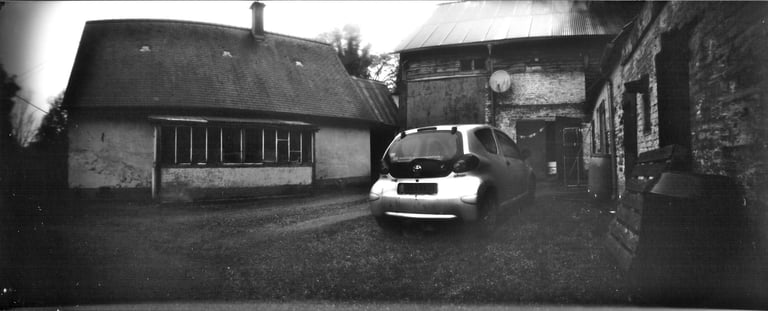

Test 1: Not great, here is the camera and the photo. The paper is held in place by wedges, the pinhole holder is the external box which only covers 5 cm.

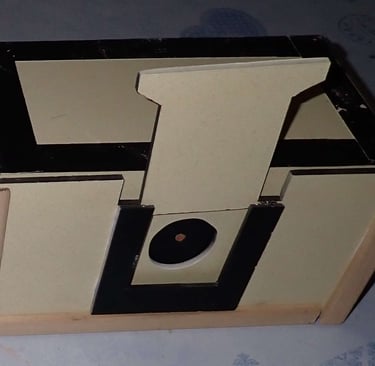
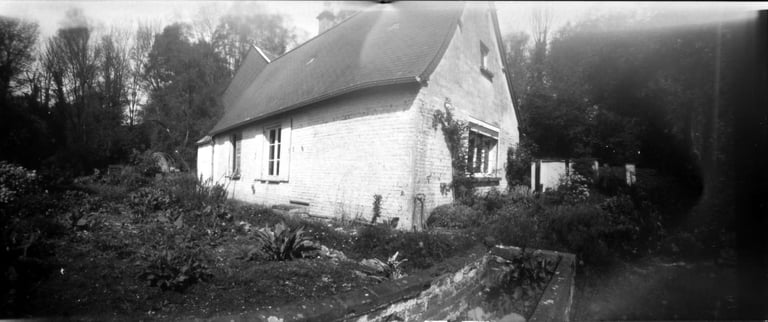

Test 2: Better but not yet perfect. Light leaks.
Next test to plan, another shutter system. The system with the guillotine deforms the external box enough so that a little light still passes through despite the elastics. 3 times I reinforced the joints of the boxes but 3 times I have a halo on the image. On the latter it is less pronounced but it is there. GRRR
Finally the solution, no more guillotine, a simple cutout in the outer box, held in place by the elastics:
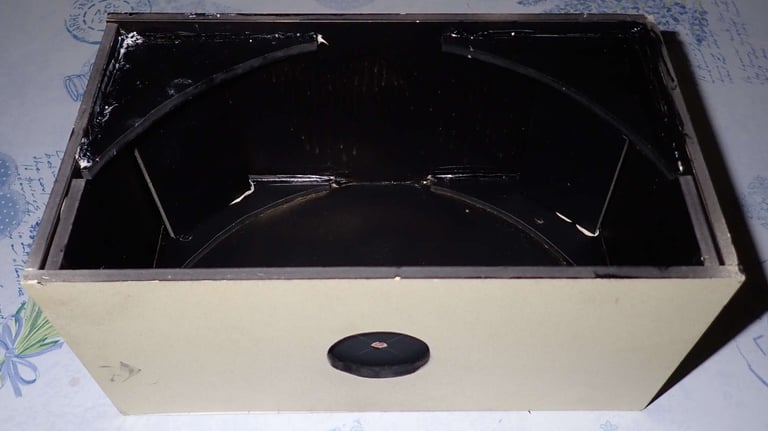

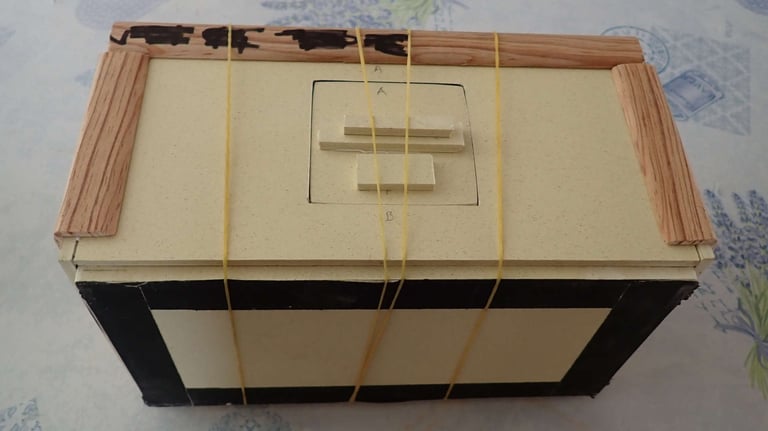

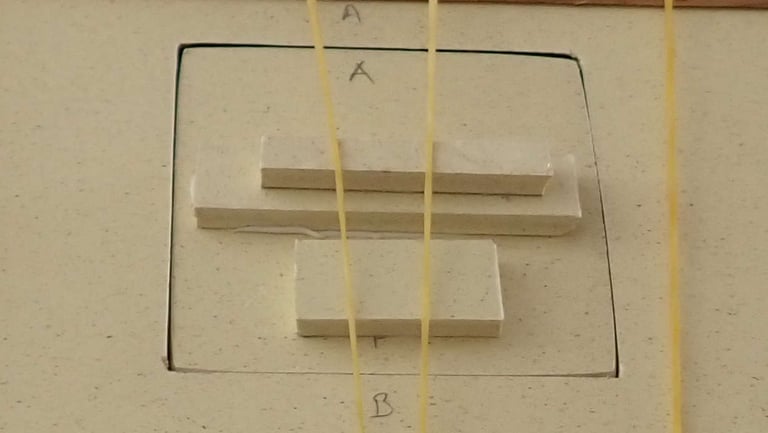

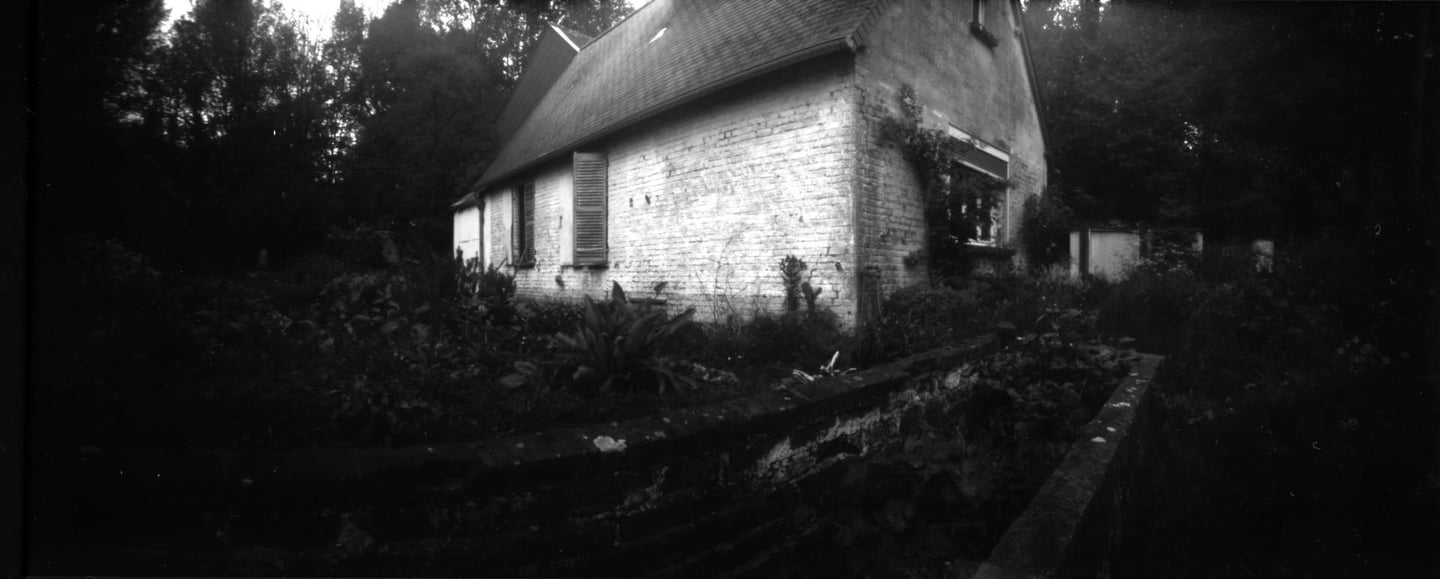

It seems that cutting the guillotine into the face of the pinhole camera did not provide sufficient rigidity to ensure light-tightness. This time no more leaks. So much no leak that it is underexposed ;-) But the model is validated and will be used on more interesting locations.
A lens of almost 140° is equivalent to a 7 mm equivalent to 35 mm, not found on the market, the widest ultra wide angle is the Laowa 9 mm, in any case it is Laowa who says it:
Don't forget 7 artisans 9 mm:
Both are announced almost without distortion. The difference with the pinhole camera? The price ;-) And the sharpness obviously. If the pinhole camera competes on the angle of view it cannot compete in image quality with quality optics. But isn’t it precisely this velvety aspect that we seek with pinhole photos? A quality nevertheless to be underlined, this arc-shaped assembly makes any vignetting impossible, the distance between the pinhole and the image is the same both in the center and on the right and left edges of the image. If we wanted to quibble we could object, a term that could not be more appropriate, that there is still a difference in illumination between the center of the image and the upper and lower edges of the image. This difference exists but the distances involved are not significant in a panoramic format. Take out the calculators and see for yourself ;-)
This type of pinhole camera exists in film format, notably at RealitySoSubtle in 6x17 cm format:
And it’s French, cocorico!!!
The presentation photos of the page amazed me, they are magnificent. But I only work with paper and with even larger formats. One thing to note however, it is no longer a plane projection but a cylindrical projection, hence the formal obligation to position the device perfectly level so as not to obtain enormous deformations. The devices on this page distort no matter what, especially the one below where it is intentional from the design.
2: Anamorphic 9x24 cm
Typically a style of photo impossible to achieve with a traditional camera.
In a normal camera the light-sensitive material is placed behind the lens and its position must be precisely adjusted so that the image is sharp. With an anamorphic camera the pinhole hole is placed above the sensitive surface and it is the small diameter of the hole which makes it possible to obtain a clear image both at the top and at the bottom where there is nevertheless 9 cm of gap. Imagine a tube with a pinhole on one side and the paper placed at the bottom on the other side. You have a classic pinhole camera, a classic camera but without a lens. Now imagine the same tube but instead of placing the paper at the bottom, imagine that it is placed in the tube following the rounded sides of it. Such a feat is strictly impossible with an optical lens.
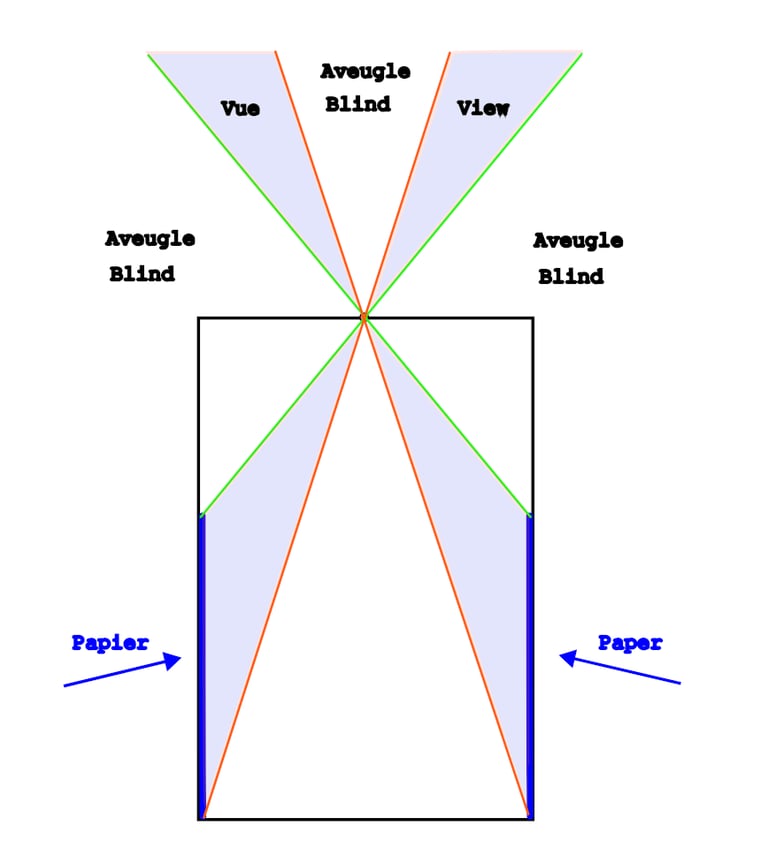

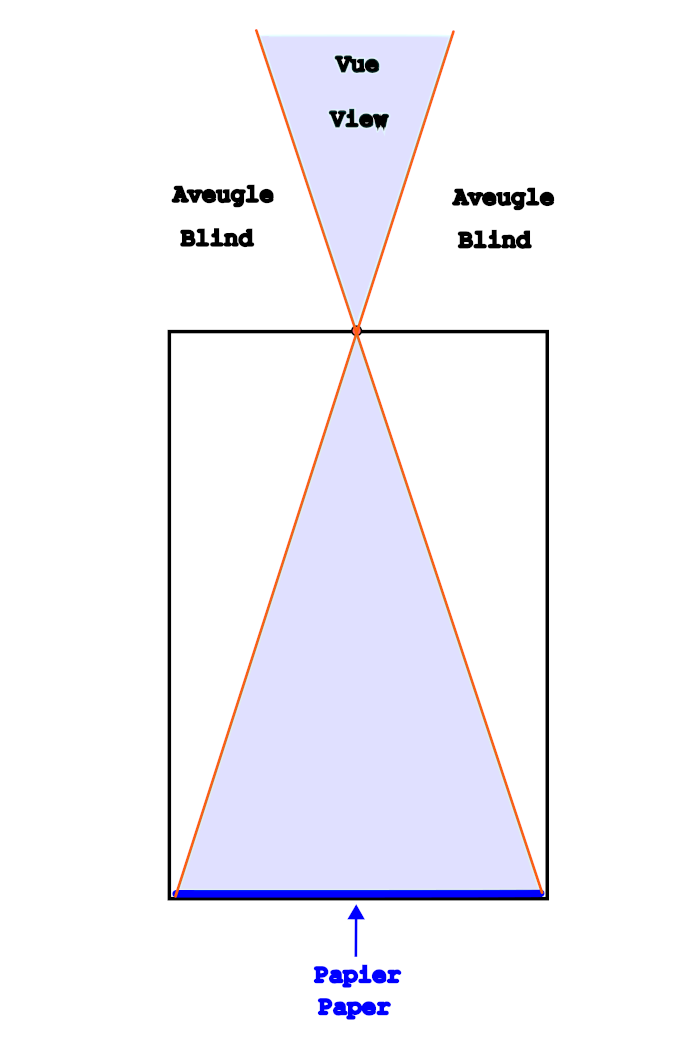

Here is what is photographed with this type of camera and with a traditional camera. The difference is obvious... Despite this feat, there remains an unavoidable pitfall. The optimal exposure time for the top of the image is much shorter than that for the bottom of the image. The paper tolerates 2EV without too many problems but there is inevitably a difference in exposure between the top and bottom of the image. In the sketch we see that the hole/paper distance is much shorter at the top of the image than at the bottom. To obtain an approximately correctly exposed image I base the exposure time on half the height of the image. Another problem is that each distance corresponds to a pinhole diameter, here it is a single diameter for the entire height of the image.
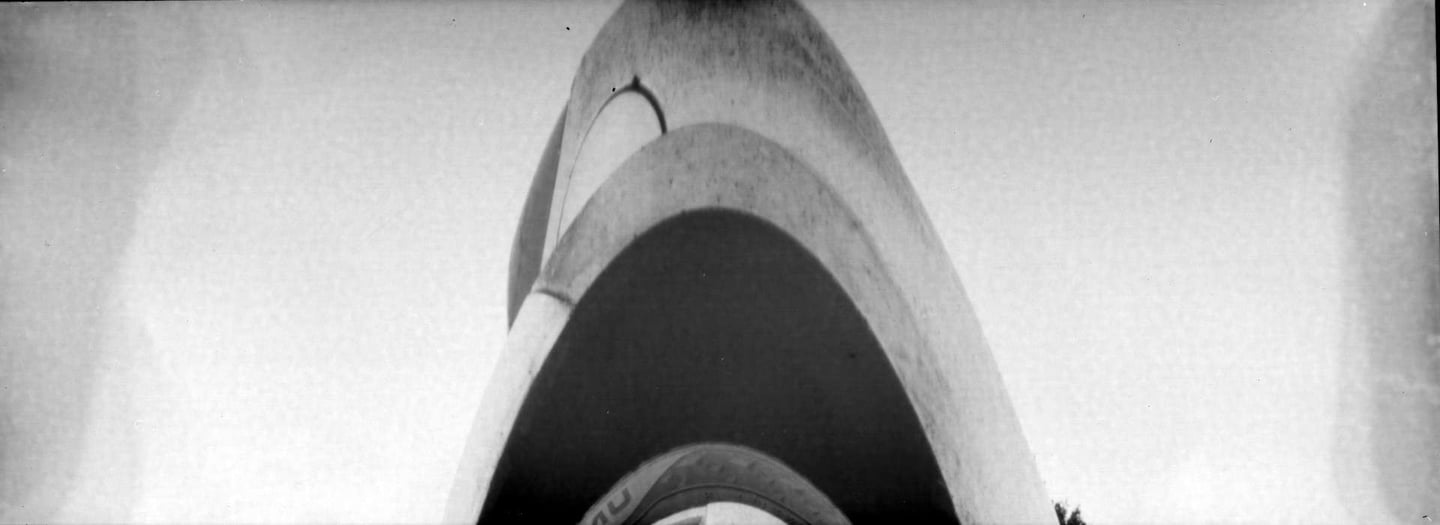

Here is one of the photos taken from this very last pinhole camera. I'll have to learn to aim, theoretically it's a car wheel :-)
I found 2 brands that offer anamorphic, there may be others, Vermeer in 6x17 cm:
and MIA in 6x12 cm:
Watch Will Gudgeon's video, (in English), his channel is a gold mine for all pinhole enthusiasts, don't hesitate to subscribe if you haven't already done so.
This time the paper is placed in an arc but it could be placed flat on one side of the box or even distorted in any way, anamorphic pinhole cameras offer absolutely crazy possibilities that have not yet been fully explored.
